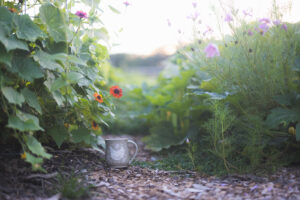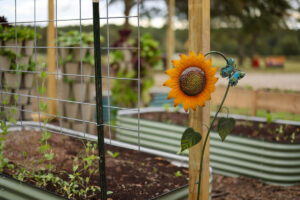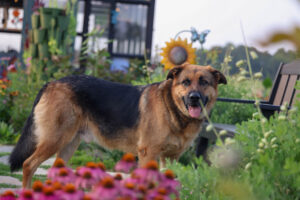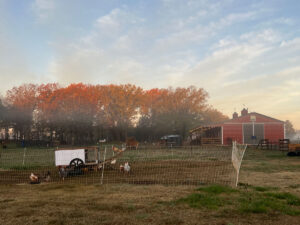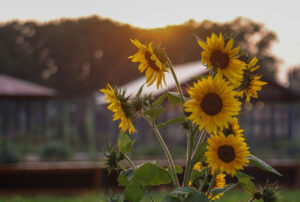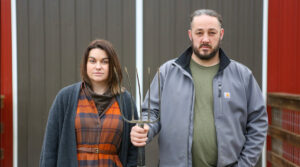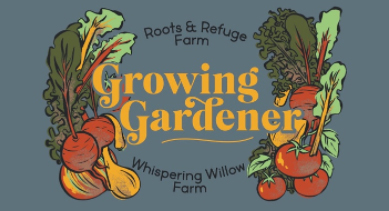With forethought and planning, feeding on a farm can become an efficient process that requires less time and has less waste. Proper feed storage allows you to make fewer trips to the feed store because you can successfully store large amounts of feed without your investment getting ruined by rodents or moisture. Here is our baseline of the types of feed we choose and why, how to streamline your feeding process, and a surprising solution for feed storage.
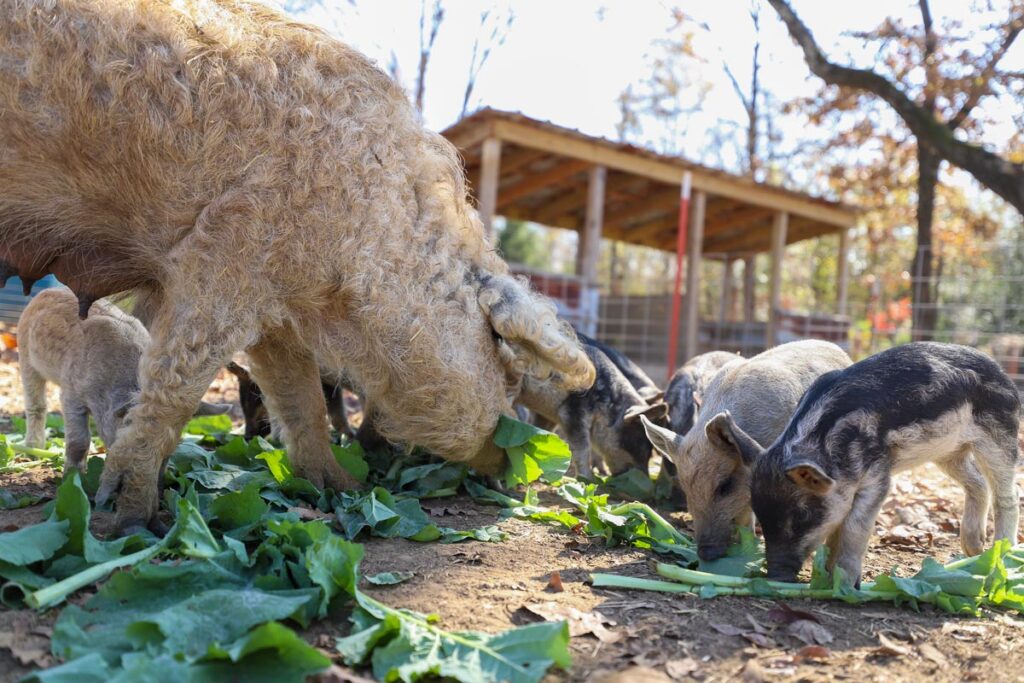
One of the main reasons that people get into growing their own food is so that they can control the quality by growing organically and eliminating chemicals, antibiotics, and hormones.
When raising meat animals, that largely means the quality of feed that the animals are being fed.
I want to encourage you and give you ideas and information that you can apply to your homestead as you see fit.
The Animal Feed We Use
We are feeding the best quality feed that we can get at our local feed store and we make some feed mixes ourselves.
We are always looking for ways to feasibly improve the quality of feed that we are giving to our animals. We do not feed our animals any kind of medicated feed, but we are not yet using exclusively organic feed because it is difficult to source and/or cost prohibitive.
Don’t be discouraged if you can’t feed exclusively organic feed, but look for other solutions.
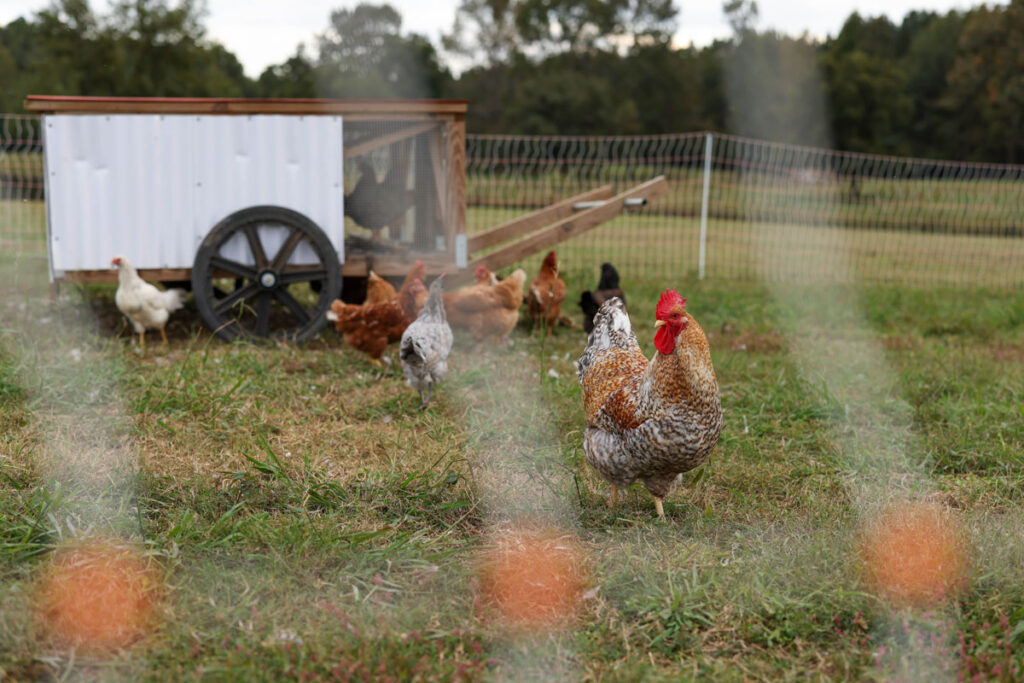
Chicken & Duck Feed
As a baseline, we feed a locally milled, non-medicated layer pellet which we purchase from a local store.
Our chickens and ducks are also free range and we feed them garden scraps and the pulp after we juice fruits and vegetables.
Someday I would like our chickens to be on a fermented fodder feed system.
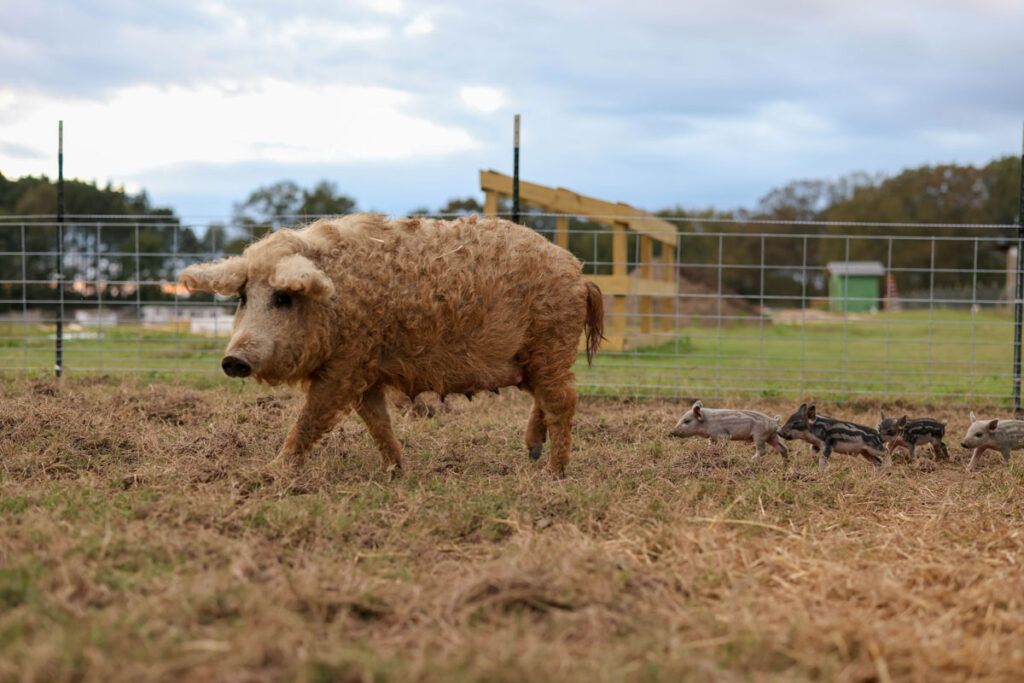
Pig Feed
We feed our breeder pigs a homemade mix of crimped (or whole) oats, alfalfa pellets and black oil sunflower seeds.
We would like to add barley to this mix, possibly sourcing spent barley from a local brewery. In the past, we have used a locally milled hog grower feed as well.
Horse Feed
We no longer have horses at our new property, but in the past, we would feed them a high quality horse pellet that we purchased from the feed store.
It came highly recommended and we noticed an improvement in our horses after switching.
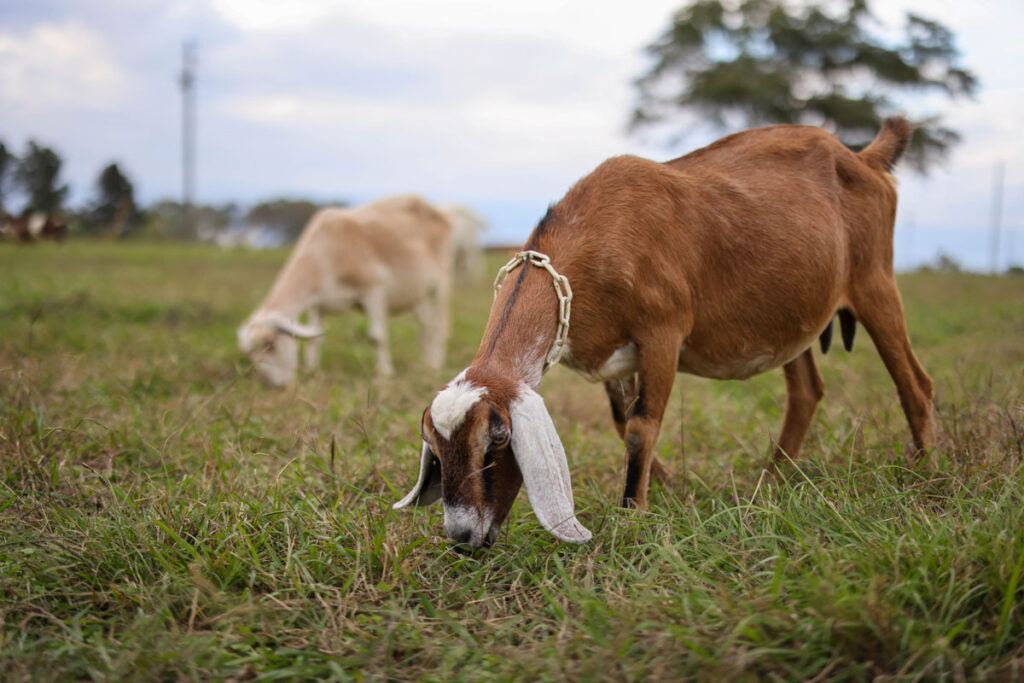
Goat Feed
Our female goats are fed a mixture of locally milled dairy goat pellets, dehydrated alfalfa, and, what we called in Arkansas, a sweet feed with corn and molasses.
We create this mix for our goats for several reasons.
- Nutritionally, the dairy goat pellets have less protein but have some essential minerals.
- The alfalfa has more protein but less minerals.
- The two complement each other when fed in a mix.
Goats are ruminants and don’t do well when their diet is switched up quickly. It can cause bloat or other digestive issues.
By mixing the three different kinds of feed, we can keep them on a consistent diet even if one type of feed becomes temporarily unavailable at the feed store.
Mixing only two of the three types of feed shouldn’t negatively mess with their digestive system because it is still similar to their regular diet. Now we don’t have to worry about hearing, “Sorry, we won’t get that in until next week,” at the feed store.
And here is information about bottle-feeding baby goats along with a feeding schedule.
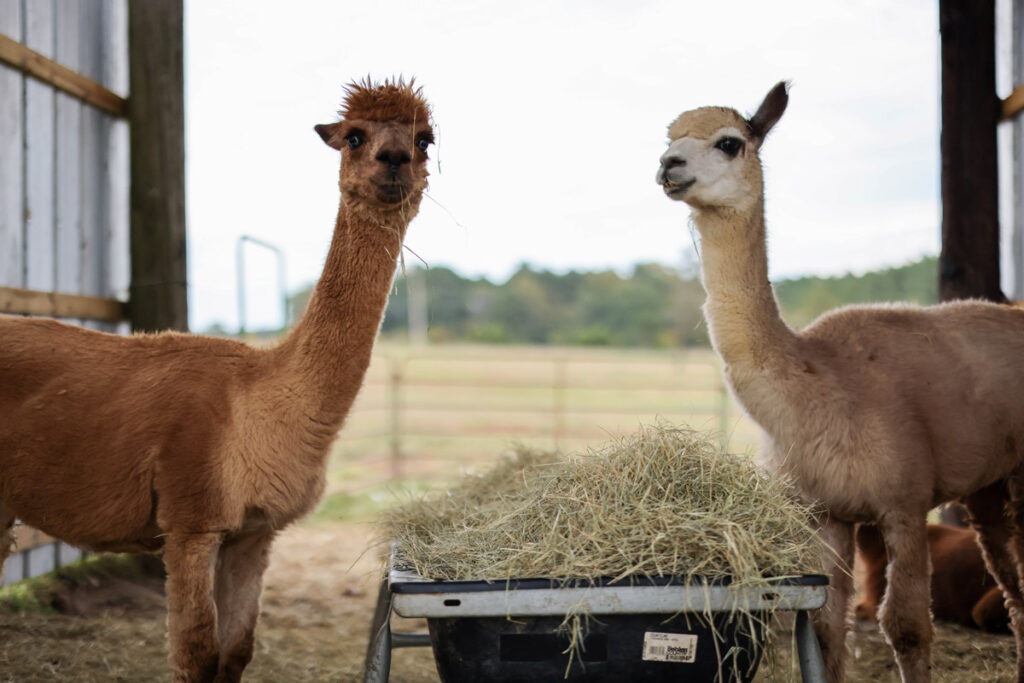
Alpaca & Llama Feed
Currently, we feed a non-medicated standard alpaca and llama feed.
This is basically the only option that we have locally. We are still learning about alpacas and will stick to this feed until we find something better.
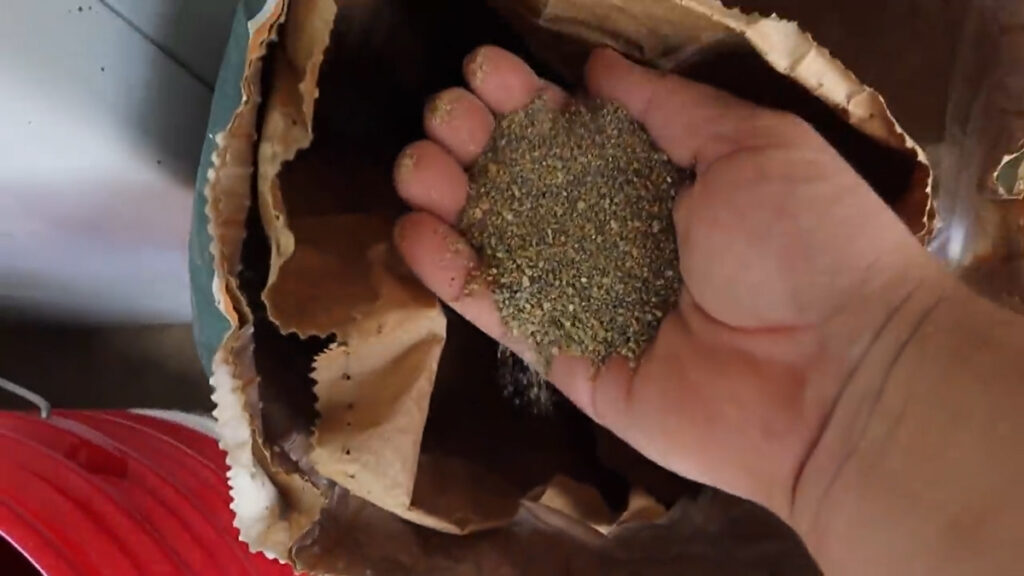
Quail & Pheasant Feed
Because they are smaller birds, quail and pheasants need a crumble and not a pellet. We feed a crumble that is specifically made for these birds.
Additional Feed Supplements
We do like to add supplements to our feed. For instance, we add a little scoop of crushed oyster shell to our chicken and duck feed. We also add a little scoop of minerals to our goat feed.
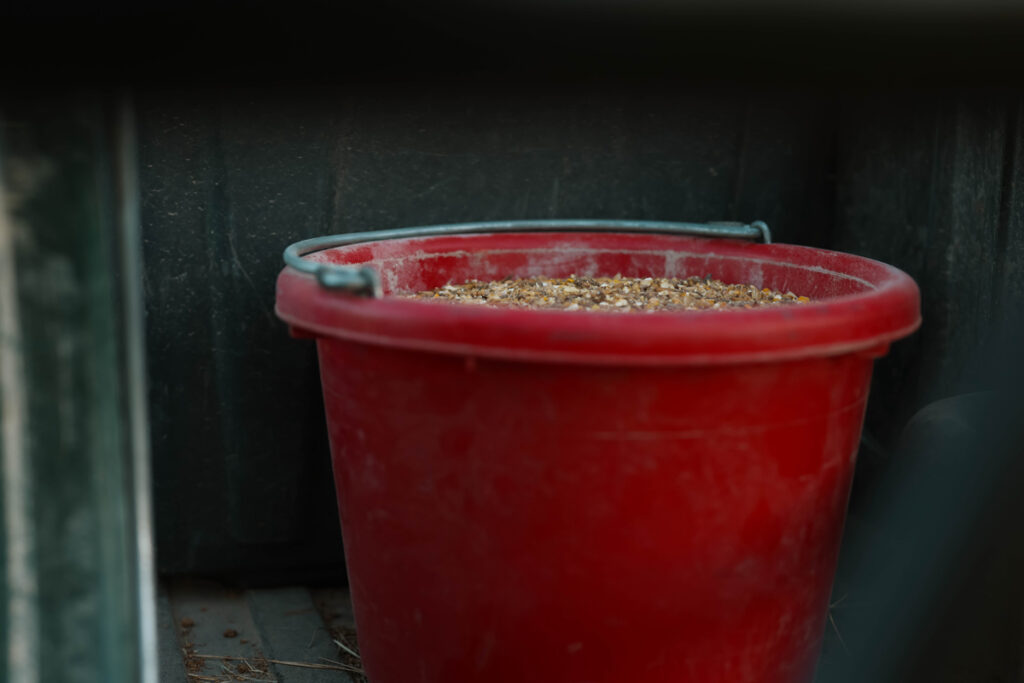
Where & How To Store Animal Feed
Ideally, animal feed should be stored in a way that allows convenient, easy access both when unloading after purchasing and when distributing it to the animals. It should also be kept away from pests and weather to prevent mold, spoilage and loss.
Initially, we bought metal trash can containers with lids which we placed by each animal pen: one for the ducks, one for the goats, one for the chickens, etc.
We filled those with the feed for the animal at each location. This worked okay, but there were a few problems that we had with this system.
- We buy our feed monthly and we found that distributing large amounts of feed to the individual containers in different locations was inconvenient and inefficient.
- The larger animals, like goats, were constantly trying to figure out how to knock the containers over or get the lids off to get to the feed when they weren’t supposed to.
- The lids eventually began to leak and we lost feed to rain and mold.
Our current system is working much better. Now, we store all of our feed in a covered, central location. Our hay is kept here in a covered, dry place too.
This allows for quicker unloading after purchasing our feed and an easier, more efficient morning feeding routine.
In the morning, we scoop feed into buckets for each pen, load the buckets onto a trailer pulled by our 4-wheeler and drive to each pen to feed.
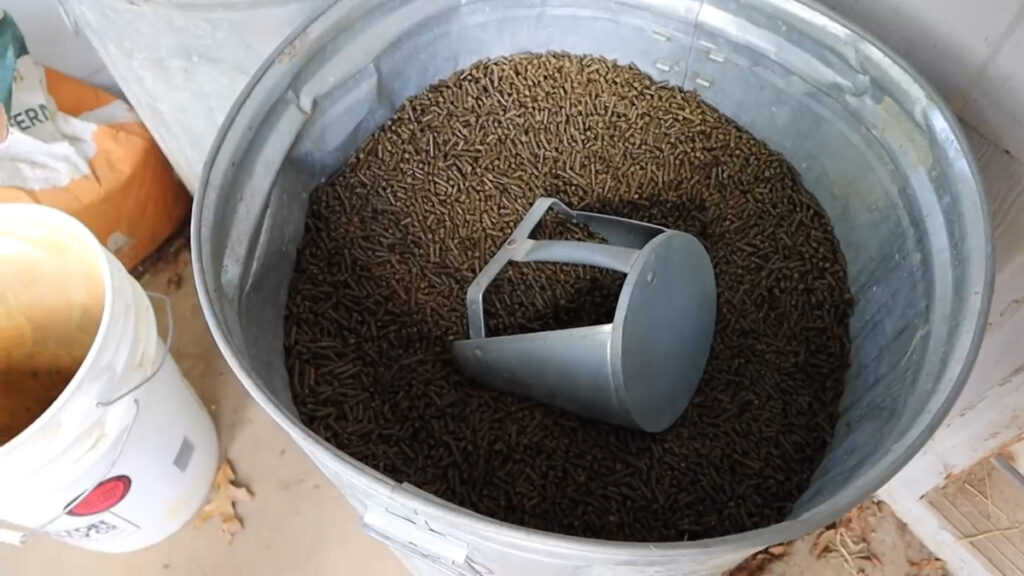
Best Animal Feed Storage Bins
We use the metal trash cans for some things (but keep them under cover), and we have upgraded our large storage containers to repurposed freezers! Surprised?
We had an old chest freezer that no longer worked and so did my mom, so we moved them to our feed storage location.
I can store an entire month’s worth of chicken feed in the smaller chest freezer with zero problems from moisture, rodents, or animals getting into the feed.
The larger chest freezer holds our breeder pig feed.
Repurposed freezers are great for feed storage!
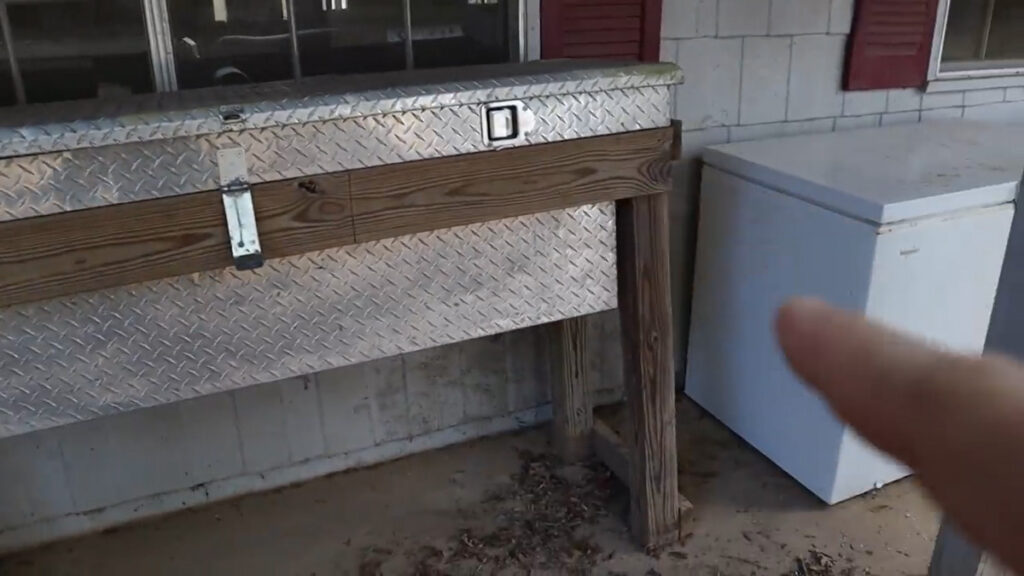
Another item you might have lying around that could be repurposed for feed storage is a truck toolbox.
I built a sturdy wooden frame to hold it up and it is working well for storing our goat feed. Keep in mind, a truck toolbox may leak if you don’t keep it in a covered area!
I encourage you to find the best option for your farm. Talk to other people about what they are feeding to similar animals in a similar location/climate to help you make your decisions. Adopt that and tweak it to make it work for you.
I hope this was helpful information and gives you ideas for how to store your feed to enable you to buy in bulk and keep it safe from weather and critters.

